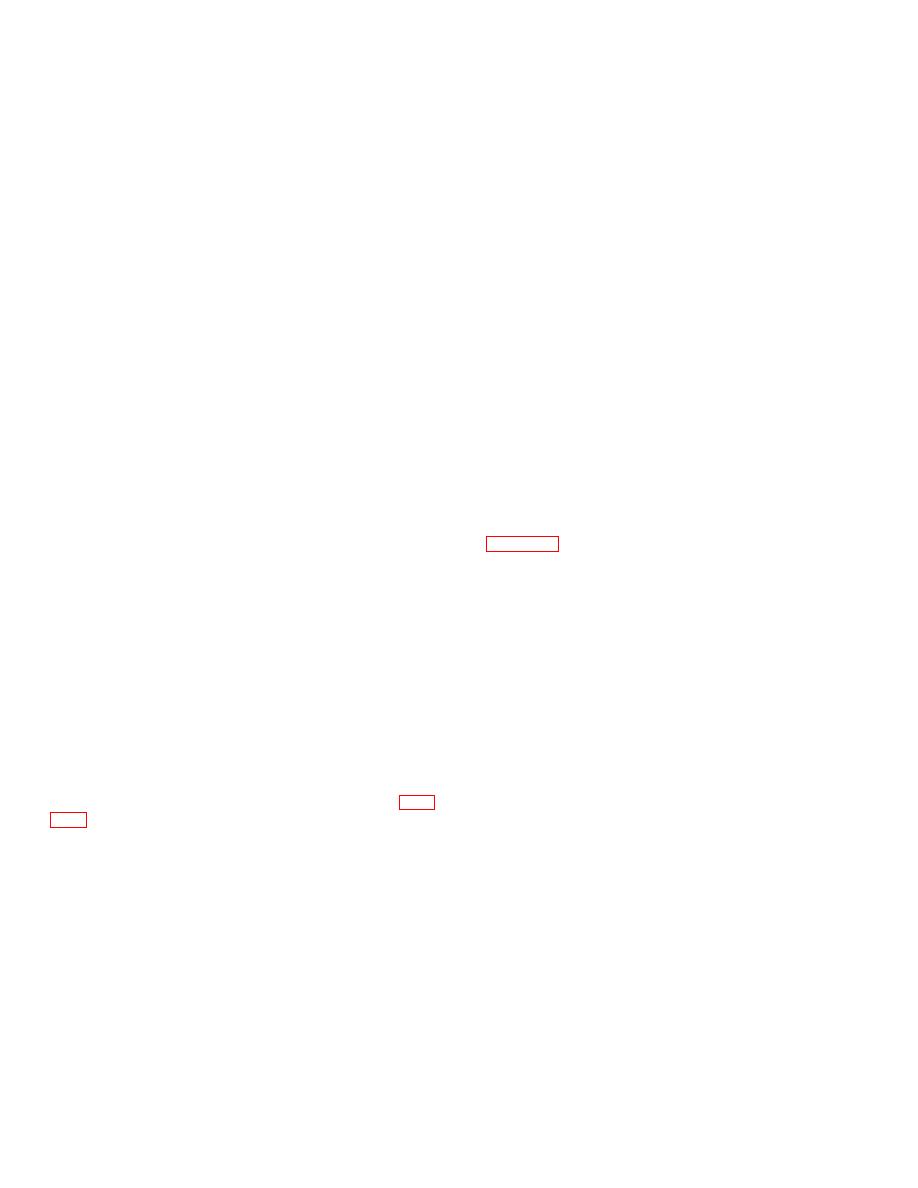 |
|||
|
|
|||
|
Page Title:
Section V. OPTICAL INSTRUMENTS AND THE EYES |
|
||
| ||||||||||
|
|
 TM 9-258
Section V. OPTICAL INSTRUMENTS AND THE EYES
siderations, when the eyes are seriously affected by
3-12. General. Optical fire-control instruments may be
astigmatism, the observer should not remove his
placed in two general classifications: monocular, for the
spectacles as no compensating adjusting can be
use of one eye and binocular, for the use of both eyes.
secured by focusing the eyepiece of the instrument.
Both types require certain adjustments to accommodate
d. Eyeshields. The proper fit and use of the
them to the eye as the use of any optical instruments
eyeshields should be such that it excludes stray light
affects the functioning of the eye itself.
from the eyes. This is particularly important in night
observation and under conditions of poor illumination so
3-13. Accomodation of Optical Instruments to the
that the pupil may dilate as much as possible. If a
Eyes.
monocular instrument is used, the eye not is use should
a. Conditions for Clear Vision. In order that the
also be shielded from light; if it receives too much light,
eye may function properly in the use of a monocular
the pupil of the eye in use will contract sympathetically.
instrument, the instrument must be focused to permit
Rubber shields at the eyepiece make the most effective
light entering the instrument from an object to form a
seal. Any light used to illuminate the reticle must be held
distinct image on the retina without undue effort on the
to a bare minimum.
part of the eyecontrolling muscles of the observer. The
e. Interpupillary Adjustment.
A binocular
exit pupil (rear opening of the eyepiece) must be
instrument must be adjusted to the eye spacing or
sufficiently large to let the maximum amount of light
interpupillary distance of the observer. If this is not done,
enter the pupil of the eye. Stray light must be kept out of
the lines of sight of both eyes cannot traverse the most
the eye. In addition, the use of a binocular instrument
effective optical paths of the instrument; the observer will
demands that the two optical systems of the unit be
not have full binocular vision, nor view the most distinct
properly alined with each other and conform to the
images, nor be able to seal out unwanted light from the
interpupillary distance of the individual.
eyepieces. Practically all instruments of this type are
b. Focusing.
Precise focusing of the
equipped with means for interpupillary adjustment. They
instrument permits light from the object to form a distinct
are marked with calibrations for such adjustment. The
image on the retina. Focusing changes the position of
observer should determine his interpupillary distance
the eyepiece with relation to the focal plane of the
objective and the angles at which the light rays are
he may use to conform to the spacing between the pupils
brought to a focus. The eyepieces of focusing-type
of his own eyes.
telescopes generally are designed to accommodate the
refracting qualities of the eyes of individual observers. If
3-14. Eye Tension or Fatigue
the instrument is used consistently by an individual, the
a. Blinking of the eyes is an automatic process
eyepiece setting can be memorized to expedite the
resulting from eye tension or fatigue. It will occur in the
focusing of the instrument. Low-power telescopes have
use of optical instruments because the eyes cannot
a wider range of accommodation without adjustments
focus steadily very long without relaxing. It is muscular
than high-power telescopes. Telescopes in which the
rather than retinal, and is least apparent when the eye is
magnifying power is 4X or less have a sufficiently wide
relaxed as when accommodated for distant objects. For
range of accommodation so that a single focus setting
this reason, in focusing an instrument, it should be
will be satisfactory inasmuch as the eye correction is not
focused for distance and the first distinct focus setting
extremely large. They are generally constructed with a
should be used.
fixed-focus eyepiece which cannot be adjusted during
b. Fatigue of the eye muscles will be
operation. They are called fixed-focus telescopes, and
experienced after comparatively short periods of
usually have a minus 3/4 to minus 1 diopter setting (para
continuous observation. This fatigue usually is greater
with low illumination. Inasmuch as the eyes quickly
c. Use of Spectacles. If the proper spectacles
recuperate, frequent rest periods are advisable.
are worn, the corrected eyes will focus at the normal
c. A particular type of fatigue results from the
setting of the instrument.
However, the use of
use of binocular instruments if not set at proper
spectacles prevents the eyes from coming up properly to
interpupillary distance. This is due to the fact that both
the eyeshield of the instrument and the eye may be
eyes involuntarily adjust themselves so that a
placed so far from the eyepiece as to restrict the field of
view. In spite of these con-
3-17
|
|
Privacy Statement - Press Release - Copyright Information. - Contact Us |